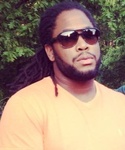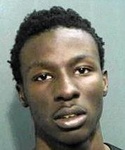The Suffolk County District Attorney’s office will not seek charges against the Boston Police officer and FBI agent who fatally shot a Boston man in Roslindale in June of 2015.

Usaamah Rahim
Law enforcement officials confronted Usaamah Rahim at a bus stop near the CVS on Washington Street. He had been under surveillance after investigators learned he was reportedly plotting, with two other people, to behead someone in New York City. Rahim reportedly had ties to members of ISIS. On the morning of June 2, 2015, when officials approached Rahim, he reportedly brandished a large, military-style knife and walked towards the agents with it. The knife was visible on the ground at the crime scene.
In a statement, Rahim’s family expressed appreciation for the investigation but said they wished the investigation had a wider scope.
“From the beginning, we have raised a set of broader concerns that appear to be beyond the scope of the DA’s investigation. Specifically, we have asserted that Usaamah was the subject of an illegal arrest,” the statement read, according to Wicked Local Brookline.
Click below to continue reading for Suffolk County DA Dan Conley’s full remarks.
“Good afternoon. Thank you for joining us. With me today are Boston Police Commissioner William Evans and Special Agent in Charge Harold Shaw of the FBI’s Boston office.
Earlier today, I met with the family of Usaamah Rahim, who was fatally shot last year by a Boston Police detective and an FBI special agent assigned to a Joint Terrorism Task Force led by the FBI’s Boston Field Office. I informed Mr. Rahim’s family and their attorney today that I would not be seeking charges in connection with his death. The overwhelming evidence gathered and analyzed during the course of the past year proved beyond any reasonable doubt that Mr. Rahim was armed with a large, military-style knife and posed the threat of death or serious injury to the Task Force officers at the time of the shooting. Their use of deadly force was a lawful exercise of self-defense or defense of others and did not constitute a crime under Massachusetts law.
This is the very same standard I’ve applied when declining to charge three civilians in the past five years alone who used deadly force to defend themselves against death or serious bodily injury.
During my meeting with Mr. Rahim’s family and their attorney, I also released to them a copy of our investigative file, containing interviews with over a dozen eyewitnesses, the overwhelming majority of whom were civilians uninvolved with the Task Force or the terrorism investigation that led to Mr. Rahim. The file also includes a complete transcript of Boston Police dispatch recordings from that morning, every report generated by responding Boston Police officers and investigators, and footage from every surveillance camera at the scene.
Pursuant to my policy for more than 10 years, I am releasing this investigative file to the media, as well – more than 770 pages of documentation, more than 370 digital images, and video from cameras at four separate commercial establishments.
To my knowledge, this level of transparency in a fatal police shooting is unique to my office and unparalleled across the country. But because of the unusual nature of this case, which involves an ongoing prosecution of two men on federal terrorism charges, certain documents cannot be released, including the sworn statements of the surveillance team that encountered Mr. Rahim. But I want to reiterate that these materials were scrutinized during our investigation and legal analysis, and they are fully consistent with the physical evidence, camera footage, and eyewitness statements that we’re making available to you.
As members of the Boston media know, Massachusetts is one of the few states in the country where the authority to direct and control death investigations is vested with the district attorney. In most big cities across the country, police departments perform their own investigations and hand off their charging decisions to prosecutors after the fact. In Suffolk County, the investigation is overseen from its inception by my office, an independent authority outside the command structure of the police department or, in this case, the FBI.
The responsibility – first to find the facts through an exhaustive investigation, and then to apply the law – rests with me, not Commissioner Evans or Special Agent in Charge Shaw. I responded to the scene that morning with senior members of my staff, who oversaw the investigation from start to finish, and reported exclusively to me, with the input of other senior homicide prosecutors. I would like to note in particular the exhaustive work of the Boston Police Firearms Discharge Investigation Team led by Sergeant Detective John Ford and Lieutenant Detective Darrin Greeley, who gathered so much documentary evidence in the critical first few days.
I’ve spoken to district attorneys and attorneys general from across the country over the past two years or so, all of them interested in what’s become known as the Boston Model for investigating police shootings. The hallmarks of that model include independent oversight through a prosecutor’s office, on-the-ground investigators who adhere to best practices in interviews and evidence recovery, and a policy of transparency with regard to documentation and legal analysis.
This model builds confidence in our findings, but it also ensures that everyone involved is operating at the very highest levels of professionalism and integrity.
Our investigation under that model revealed the following:
Prior to the morning of June 2, 2015, members of the Joint Terrorism Task Force were surveilling Mr. Rahim as part of an investigation into his ties to the terrorist group known as ISIS or ISIL. Specifically, they were investigating his plan, with others, to commit crimes of terror and murder within the United States, targeting a person in New York City for beheading at the instruction of a known ISIL militant. The Task Force members knew that Mr. Rahim had purchased three large, military-style knives, including an Ontario Knife Company Model SP-6 fighting knife. This knife was 13 inches long with an eight-inch, double-edged blade.
Very early on the morning of June 2, 2015, members of the Task Force listened to a recorded phone conversation between Mr. Rahim and a co-conspirator in which Mr. Rahim abandoned the plan to travel to New York City and instead planned an attack against police officers here in Boston. It was clear from this recorded conversation that Mr. Rahim did not expect to survive the attack.
Upon hearing this recording, a Task Force supervisor notified the Boston Police and FBI agents who comprised the surveillance team of the sudden change in Mr. Rahim’s plans. The supervisor instructed the surveillance team to stop Mr. Rahim for questioning and prevent him from boarding public transportation, as he frequently did.
At about 6:53 am, Mr. Rahim left his Roslindale apartment and walked to the CVS at 4600 Washington St. Surveillance cameras inside the store captured footage strongly suggesting that he was armed with the SP-6 fighting knife at this time.
The sheath to that knife came with a cord that would allow it to be tied down on the wearer’s leg, and this cord is visible in the footage.
Instead of proceeding to his usual bus stop, Mr. Rahim returned to his residence. The surveillance team did not take action and instead continued to watch him while Boston Police and the FBI alerted tactical teams to assist in detaining him.
Minutes later, just after 7:00 am, the surveillance team observed Mr. Rahim leave his home again and walk to the bus stop. Because of their prior instructions, which were based on the threat that Mr. Rahim would pose in the target-rich environment of an MBTA bus or train station, the surveillance team approached him on foot to detain him.
Based on the investigation thus far and the additional information developed that morning, there is no question that members of the Task Force had probable cause to arrest Mr. Rahim. They did not require a warrant to do so. In fact, knowing what they now did about his plans for that day, they had the duty to stop him before he could act.
Members of the surveillance team approached with their weapons holstered. An eyewitness described this approach as “casual” rather than confrontational. They identified themselves as law enforcement officers. A Boston Police detective assigned to the team instructed Mr. Rahim to put his hands in the air. Mr. Rahim refused that instruction and drew his fighting knife from its sheath – the sheath that is visible in the CVS surveillance footage. Members of the surveillance team drew their firearms and repeatedly ordered him to drop his weapon.
Mr. Rahim refused those orders and advanced on members of the surveillance team, who backed away from him. They attempted to de-escalate the situation by retreating a distance of nearly 50 feet, almost the entire length of the parking lot from Washington Street to Dunkin’ Donuts, and repeatedly ordering Mr. Rahim to drop his weapon.
Their attempts to back away from him were observed by numerous civilian eyewitnesses in and near the parking lot. Mr. Rahim continued to advance on the officers, refused their orders to drop his weapon, and responded by saying “You drop yours” and “Why don’t you shoot me?” Mr. Rahim continued his armed advance until he was within several feet of the officers.
Facing an active, continuing threat to himself and others, a Boston Police detective fired one round at Mr. Rahim and an FBI agent fired two rounds at him. All three rounds struck Mr. Rahim, who collapsed with the knife still in his hand. Members of the Task Force disarmed him, began providing medical assistance, and called for Boston EMS, which arrived moments later. EMTs treated him at the scene and rushed him to Brigham and Women’s Hospital, where he died of his injuries. An autopsy by the Chief Medical Examiner of Massachusetts revealed three gunshot wounds. The trajectory of those injuries, which entered from the front chest, front groin area, and right upper back, was consistent with the accounts of the Task Force officers who fired.
As most of you know, it’s been my practice to identify the officers involved in a fatal shooting. The unique circumstances of this case, however, are quite different from those we’ve investigated in the past. This case involves a conspiracy to murder a specific civilian target, and uniformed police officers more generally, in the name of a terrorist organization.
Identifying the Task Force officers by name could put them at risk, and in light of that risk we are not releasing their names. I am extending that same protection to the 18 witnesses at and near the scene who gave interviews to investigators. We are releasing the full content of their statements and observations, but we are not releasing their names or personal identifying information.
As I mentioned earlier, certain other documents must also be withheld so as not to prejudice two of Mr. Rahim’s alleged co-conspirators. These two men are charged in a federal indictment with the same underlying offenses for which Mr. Rahim was first under investigation. Again, however, the small number of materials that are being withheld do not detract from the depth of the investigation or the legal analysis on which my charging decision is based, all of which has been made available to Mr. Rahim’s family, their civil counsel, and you, the media.
After meeting with Mr. Rahim’s family, I had the chance to meet with community leaders, including several from Boston’s Islamic community. I told them, as I’ll tell you now, that Mr. Rahim was being investigated for his actions, not for his faith. My office has had a long and productive partnership with Minister Don Muhammad, the Muslim Athletic League, the Alrowda Masjid Mosque in Dorchester, and other groups. We value their contributions to Boston and Suffolk County, and I want to be clear – we condemn any violence perpetrated against them because of their religious or cultural heritage. My findings today are based solely on the facts that were known to the officers involved on June 2, 2015, and Massachusetts case law related to self-defense.
Those of us in law enforcement are working in a time of unprecedented scrutiny when it comes to the use of lethal force by police. But whatever might be said of other cities across the country, we in Boston welcome that scrutiny, and we meet it with a policy of transparency that few, if any, can match.”






